Information for making decisions: Strategic planning with SWOT, PESTLE, SOAR, and… So what?
“Companies have to be very schizophrenic. On one hand, they have to maintain continuity of strategy. But they also have to be good at continuously improving.” – Michael Porter
As strategy thought-leader Michael Porter states in the quote above, organisations that are successful are able to consistently focus their attention while at the same remain adaptable to a rapidly changing environment. To do this, it helps to have a clear understanding of the current situation.
Strategic planning is about making decisions on where you focus your attention. If you are going to make decisions, you need information, and it helps if that information is complete, relevant, accurate, and commonly understood by those making the decisions.
This is why most strategic planning processes include a conversation about the current situation or context. Information helps us make the best decision to get us where we want to go.
This conversation about our context can be involved. I hear leaders talk about the need to simplify, in part because the environments in which they operate are becoming more complicated and complex. Leaders deal with multiple relationships and multiple pieces of information that are frequently changing, unpredictable, an influenced by factors outside of the organisation’s control.
Choose your model
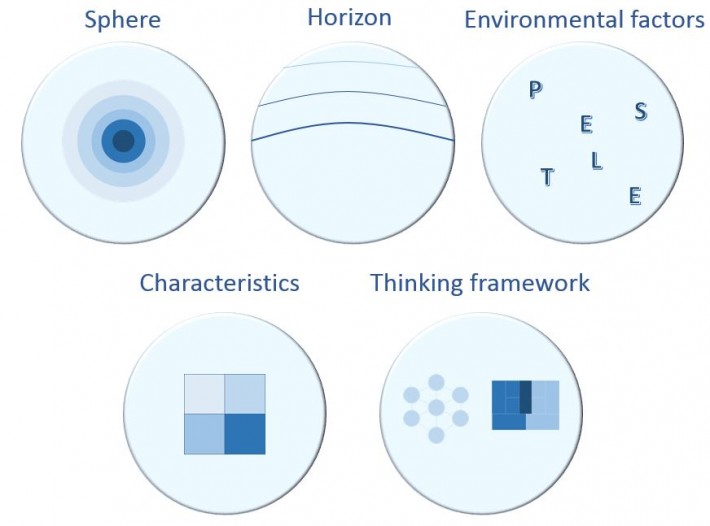
Many leaders intuitively know their context. This is one of the factors that makes them great leaders. However, even the best leaders can have blind spots where they miss critical pieces of information. Leaders also typically have teams around them, and everyone in that team may not have the same information or agree on what the information means.
To help understand their context, leaders have available to them a suite of tools to help them collect the information they need to make their decisions. Unfortunately, the tools can seem as complicated and complex as the situation they are trying to understand.
The range of acronyms is impressive. A brief internet search introduces you to SWOT, SWT, TOP, TOWS, NOISE, SOAR, SCORE, SCOPE, PEST, PESTLE, and 7S (not to be confused with 5S). You do not have to go far to find support and criticism for any of the approaches. Those who critique the tools that came before are keen to stake their consultancy claim on their own approach.
My intent here is not to make an intellectual property land grab. I do not believe there is one framework that will help all leadership teams make sense of their situation. The framework or combination of frameworks that are most appropriate depends on a range of factors including the maturity, personality and experience of the leaders, the complexity and urgency of the situation, the history of the planning process in the organisation, and from a practical perspective the time available in the workshop.
That said, there is value in having an awareness of the context analysis tools that are available and where those tools fit. This is what I intend to do here.
Each of the models applies to a level of information. While this is not a perfect categorisation, it provides a starting point to help put the different models in perspective.
The spheres of identity
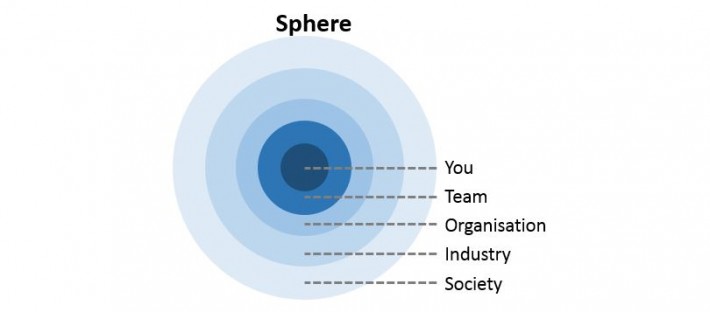
It is important to understand the perspective from which the situation is being considered. These include: The individual as a person, the individual as their role, the team, the organisation, the industry, and the broader community and society.
What are the strengths an ambitions of each person? The team? The organisation? Where is the market heading? Is there alignment? What are the areas of growth for the individuals? How do those fit with where the company is heading?
The value is not in the information itself, but in the conversation it generates as each participant puts themselves in the different roles. The spheres can be useful to align the capabilities, challenges and potential at each level.
The horizon
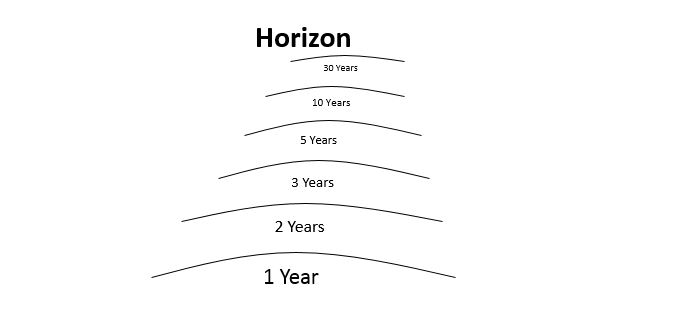
Another question to answer when considering your context is what horizon you will use. A typical horizon for senior leadership teams can be two to five years. Boards and those responsible for long-term governance may look out 10 to 30 years. More operational teams may look at a horizon of one to three years. A fast-paced start-up may forecast 6 to 18 months, with a start-up board looking at a sale process in 2 to 3 years.
The horizon is determined in part by the degree of certainty. A large 50-year transport company has the momentum and history to be fairly certain about the future to look past the next year or two. A 6-month old technology start-up paving new ground is learning something new every day.
Both situations present an excuse not to plan. The large corporation can think nothing will change and the small organisation may think the situation is changing so much that it is impossible to plan. The response to the excuse is not to give up on planning but to change the way planning is done.
The horizon will also determine what information about your situation is important. For example, broad political shifts may be interesting, but those shifts may not impact an operational team defining their one-year turn-around plan to improve efficiency and customer service. Those same political shifts may be critical, however, for a board considering new owners for a business in ten years.
The environmental factors (PESTLE)

Within each sphere, you will have different environmental factors. One of the more popular depictions of this is the PESTLE, which stands for Political, Economic, Social, Technological, Legal, and Environmental. Each factor can be considered to determine the impacts on each of the spheres or the team as a whole.
The PESTLE is designed to provide a comprehensive view of a situation, which presents a risk of capturing irrelevant information. If PESTLE is use, the information gathered can be rated as to how relevant it is to the strategy of the team. If you are not going to use the information to make decisions, it may be interesting but not worth your attention.
The characteristics (SWOT, and derivatives)
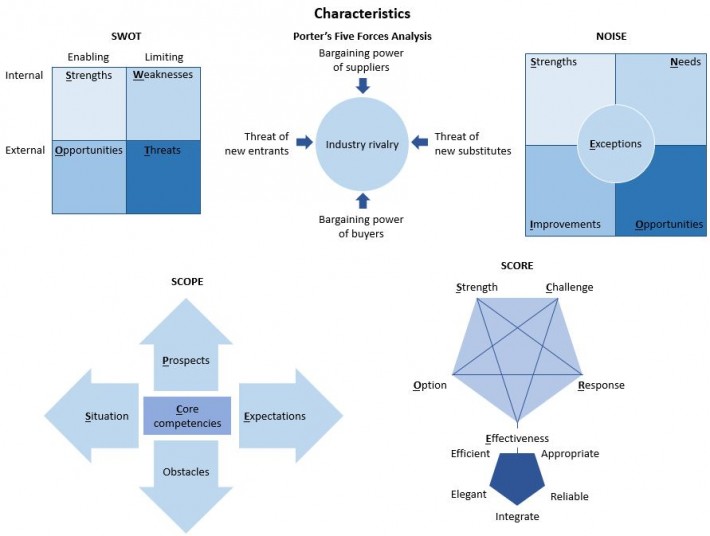
In addition to the spheres and factors, you can also consider the characteristics of the situation. One of the more popular ways of looking at the characteristics is the SWOT analysis. SWOT stands for Strengths, Weaknesses, Opportunities, and Threats. Strengths and weaknesses focuses internally and opportunities and threats are focus externally. Some recommend switching the order to consider a TOWS in order to shift the emphasis from internal to external.
The SWOT analysis has been criticised. Some say it is dated and that we should give SWOT a rest, although the reasons given have perhaps more to do with the way it is facilitated more than issues with the tool itself. Others point to an increasing rate of change to say that opportunities and threats should simply be considered as Trends, shortening SWOT to SWT.
Another criticism of the SWOT is that it can be seen as a static one-off exercise and does not produce relevant information. These concerns have spawned a myriad of alternatives, including:
- The SCORE approach, which stands for Strengths, Challenges, Opportunities, Responses, and Effectiveness and adds an inherent comparison to the outcomes.
- The SCOPE model, highlighting the Situation, Core Competencies, Obstacles, Prospects, and Expectations.
- The NOISE analysis approach, which stands for Needs, Opportunities, Improvements, Strengths, and Exceptions.
- Previously mentioned Michael Porter also developed his own Porter’s Five Forces Analysis that looks at Industry rivalry, Threat of new entrants, Threat of new substitutes, Bargaining power of suppliers an Bargaining power of buyers.
There is also a perspective that the SWOT analysis can have a negative focus. Rather than dwelling on weaknesses and threats, the SOAR model aligns with an overall Appreciative Inquiry planning framework and looks at Strengths, Opportunities, Aspirations and Results. However, SOAR is more of a strategic planning framework rather than a context analysis, describing a linear path to build from one aspect to another (Strengths to Opportunities and Aspirations, then Results) as compared to the SWOT which looks at all aspects independently (strengths, weaknesses, opportunities, threats).
Thinking frameworks
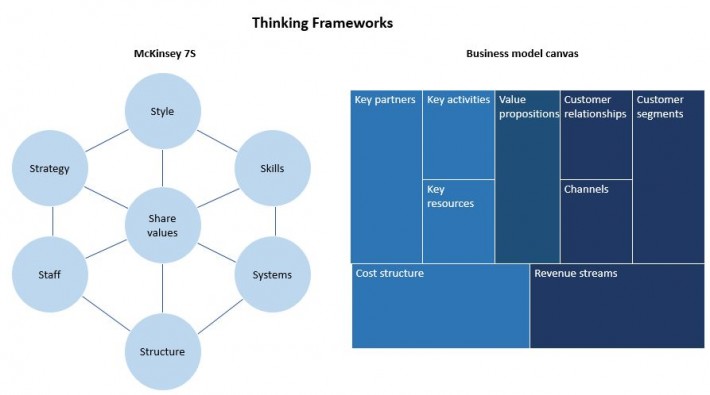
Thinking about an organisation using four characteristics can be helpful but will never be sufficient in itself. This leads to another criticism of the SWOT which is perhaps unfair. I suspect we may be asking the SWOT to do something it was not intended to do, and that is for it to provide a comprehensive way of thinking holistically about the business.
For example, some criticise the SWOT and offer an alternative that looks at capabilities across 20 variables. Others say the SWOT analysis is unable to adapt to the complexity and rate of change, defining their own “TOP analysis” that looks at terrain, operations, overseers, outliers, product, population, and players. The McKinsey 7S framework never positioned itself against the SWOT, and set out to provide a model that looks at an organisation’s Shared values, Systems, Skills, Structure, Staff, Strategy, and Style.
The Business Model Canvas is another approach that considers how different parts of the business interact with each other in consistent ways. The Canvas looks at four aspects of revenue generation (Customer segments, Customer relationships, Channels, and Revenue streams), four aspects of cost (Key partners, Key activities, Key resources, and Cost structure), and the Value propositions that connect cost and revenue together.
A lot of research and thought goes into a viable thinking framework. As such, thinking frameworks are often proprietary as intellectual property to the consultancy who develops them and not often share publically outside of a paid engagement.
So which to use?
As I mentioned before, I do not believe there is a single “best” model. The question to ask is:
Do we have the information we need to make strategic decisions about our business?
Following a framework for the sake of the framework will likely not get you the results you need. It is about the conversation that results from the framework and whether the conversation leads you to make better decisions.
For example, here are a few ways I have mixed the tools:
- Asking the team to define what contributed to their success; their position in the market, the business life-cycle, and the global corporation; and complete the business model canvas. Out of this came a shift of focus on who they saw as their end customers, the individual who used their product versus the distributor that paid their invoice.
- Working with the team to define their personal and team challenges an ambitions, as well as their organisational an industry pressures and potential. This understanding allowed the team to develop a share consensus on the current state to prioritise their strategic initiatives.
- Developing position statements along a thinking framework and rating each aspect on a scale of 1 to 10. Then working with the team to consider, if the team were to invest the same amount into each aspect, where they would have the most significant impact. This provided a means to measure the impact of specific strategic initiatives.
Most any framework can produce value. The question is not whether the information can be used, but the amount of effort that is required to make the information useful. The much criticised SWOT remains one of the more popular tools for its ability to create clear lines of sight to the strategic approach, be it a:
- Conservative or Re-orientation strategy (weaknesses and opportunities),
- Defensive strategy (weaknesses and threats),
- Offensive or aggressive strategy (Strengths and opportunities), or
- Competitive or diversification strategy (strengths and threats)
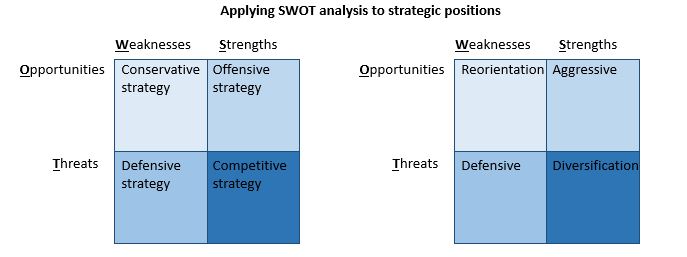
Simply having the information is meaningless unless you identify how you will exploit and capitalise on your strengths and opportunities, and overcome or mitigate your weaknesses and threats.
When it is difficult to define your context
Not all teams take the time to understand their situation before they develop their strategic plan. Here are some conditions that will make it difficult to define your context:
You have already made your decision
Teams occasionally go into strategic planning with their minds already made up as to the outcome. If this is the case, information will be ignored or discredited. It is best in these cases not to waste the time of everyone involved and be honest with mandating the outcome rather than going through the motions of people feeling as though they are having an impact.
You mistake analysis for planning
For some, gathering an analysing information can become an art form. For others, analysing information can mask a fear of making decisions. There may never be enough information to make that difficult decision.
Analysing information is not planning. Pouring over information may prepare you for company trivia night, but without planning you will be ill-equipped when decisions need to be made about the survivability of your company.
You do not believe the information is useful
What you focus on, you create. If you go into a planning process believing it is a waste of time, you will likely meet your own expectations.
You facilitate the conversation yourself
This one may seem self-serving, given my current role in facilitating strategy conversations. I make this point coming from a career as a manager who felt he could facilitate the strategic conversation for his own team. If you are facilitating your own strategic planning conversation, it is difficult to participate as there is an inherent conflict of interest. A good facilitator challenges the team, and if it is your own team you may be perceived as pushing your agenda.
Facilitating strategic planning is also a skill that is developed with practice. You may have practice running meetings, but if the only time you facilitate a strategic planning session is once a year, then you may not get the same value that you would if you bring someone in who helps teams with the process on a regular basis across different environments.
Know your “so what?” to get you where you want to go
Teams who are clear about their current situation have a solid foundation on which to plan. The value is not knowing what the information is saying, but in asking “so what does it mean?” and how it can help you make decisions. You can also read more about where the information sits in the strategic planning process in my previous post on future-focused strategic planning approaches.
If you are involved in or are a recipient of planning in your organisation, my hope is that this information is useful to you. This list is far from complete. I would be interested in your experience an what you have found helpful an not so helpful in the planning process.
As you gather your information, I encourage you to ask yourself “so what?” and surround yourself with those you who will challenge you to make your information useful to help you get to where you want to go.

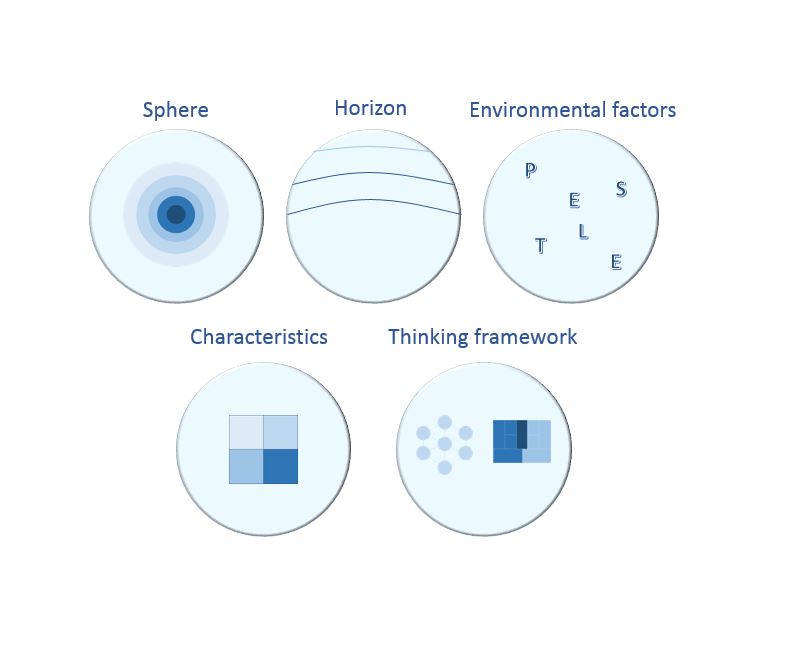
2 thoughts on “Information for making decisions: Strategic planning with SWOT, PESTLE, SOAR, and… So what?”
Comments are closed.